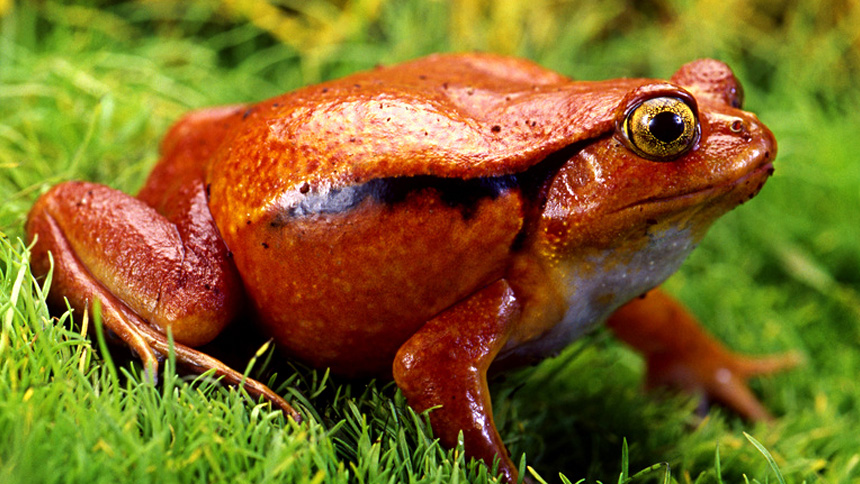
Tomato Frog Care Sheet & Pet Guide
Also known as Madagascar or Sambava Tomato Frog (Dyscophus guineti)
Tomato Frogs are one of the most popular species kept as pets. For this reason, I’ve taken the liberty of writing this care sheet, filled with all the information you need to keep these frogs happy and healthy.
I’ve added quite a bit of information to the husbandry section, should you decide you want to breed your pets. Last but not least, I’ll cover some basic information and misunderstandings surrounding these beautiful Anurans (frogs and toads).
Page Contents
Tomato Frog Cage Setup
Creating a suitable enclosure for Tomato Frogs is fairly easy. This species is nocturnal, so they don’t require special lighting. They are terrestrial, which means they will benefit from more horizontal space rather than vertical space.
Their substrate needs to be at least 4 inches deep because they like to burrow. And last but not least, they do best in high humidity.
- 10-gallon minimum or 24″ x 18″ x 18″ terrarium (recommended)
- small, shallow water dish
- 2 inches of loose substrate (something good for burrowing)
- Hollow logs or cork bark flats for hiding
- Live or fake plant decorations
- Hygrometer Thermometer for checking temperature & humidity
As for the overall dimension, I’ll start by recommending at least a 10-gallon tank minimum. This will hold 2 adults but it will be a little cramped. The bigger their tank is, the better off they will be. For each additional frog you add, I recommend adding another 10 gallons to the tank. Having said that, you can use an aquarium or a terrarium.
I recommend terrariums for frogs because they allow fresh air circulation. An 18″ x 18″ x 18″ terrarium would be great for 1 – 2 adult tomato frogs, but bigger is better.
When decorating the enclosure, I suggest adding branches, hollow logs, and plants for hiding. Because these frogs burrow, live plants may have their roots exposed and you may have a difficult time keeping them alive.
A small heating pad or basking lamp might be required to keep the temperature warm enough. This all depends on the room temperature their enclosure is kept in; read more about this in the temperature section below.
Tomato frogs don’t require a lot of water. A small, shallow dish filled with clean water will suffice.
Lighting
Tomato frogs don’t require special lighting. Should you decide to decorate their enclosure with live plants, using a full spectrum bulb is fine. A low wattage 2.0 or 5.0 UVB/UVA light set on a day and night cycle will suffice to keep most plants alive and will not have negative effects on your pet.
As I mentioned already, tomato frogs don’t require lighting to remain healthy. It’s only if you need lighting for live plants. If this is the case, try to keep the daytime cycle under 14 hours, providing your pet with at least 8 – 10 hours of nighttime.
Temperature
Keeping your frog’s enclosure at room temperature or a little higher is a great starting point. To be more specific, keep their temperate between 65 – 85 degrees Fahrenheit. Anything above or below can result in injury or death.
A heating pad or basking like might be required to keep the enclosure warm enough, depending on the ambient temperature in your house. If needed, set the heating element up using a thermostat to keep the temperature within the desired range.
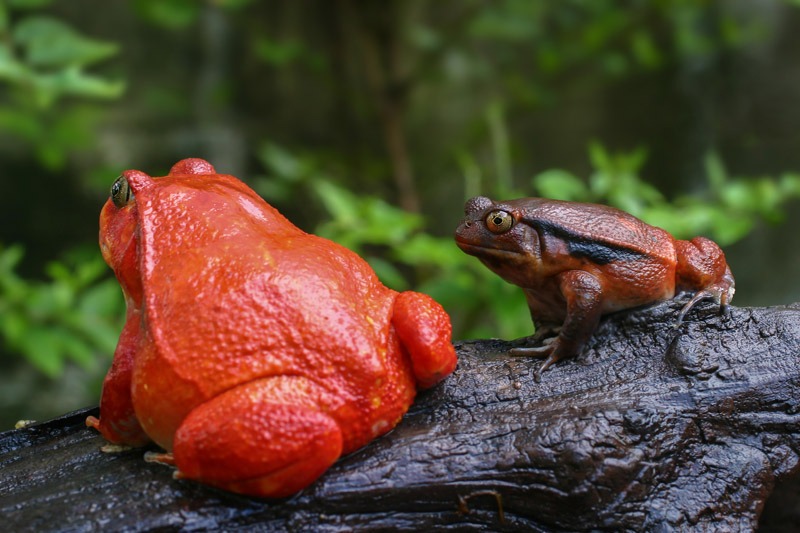
Substrate
Tomato frogs love to burrow. Because of this, a loose substrate is recommended. Aim for 2 inches of depth to provide them with enough room. Substrates like eco earth, plantation soil, or other coco fiber substrates are loose, which is ideal for burrowing.
Topsoil is another option, provided it’s safe for amphibians (free from pesticides and fertilizers). Mixing sphagnum moss into the substrate or simply placing a generous amount in one corner of the cage is a great idea too. Dampen the moss first and it will help retain humidity within the cage, along with moisture-retaining substrates like coconut fiber.
Because Tomato frogs burrow, there is a good chance your live plant’s roots will become exposed. Use careful consideration where you place live plants or simply use fake plants instead.
Water Quality
As with all amphibians, they need access to clean, dechlorinated water. Frogs absorb water through their skin and any toxins in the water will be absorbed as well. This doesn’t mean you should use distilled water either. Frogs like soft-to-medium water hardness with a neutral pH level.
Distilled is pure water, which is great, but it lacks minerals. I wrote a comprehensive guide on the subject of clean water for amphibians and, if you want to read it, you can do so by clicking here.
In short, use something like ReptiSafe to condition tap water before using or opt for using bottled drinking water.
Having said that, provide your Tomato frog with a small, shallow water dish and change out the water every other day or as needed. Make sure their water dish isn’t very deep!
Humidity
The humidity level within your frog’s enclosure should be relatively high, around 65 – 80%. To do this, mist their enclosure daily or as needed and invest in a quality hygrometer.
Remember, Tomato frogs burrow, so use this to your advantage and pick a moisture-retaining substrate like coconut fiber with sphagnum moss. Over time the substrate will release the moisture into the air, increasing the relative humidity.
There are other ways to increase humidity in a terrarium, but misting the cage with a spray bottle is one of the best methods.
Tomato Frog Diet
In the wild, Tomato frogs eat a variety of insects. All their vitamins and minerals are obtained from the live food they eat it. In captivity, however, this is another story. Because it’s not plausible to provide your frog with all the insects they would normally eat in the wild, you’ll need to dust their main food source with calcium and vitamin supplements.
For more information, check out this guide on a frog’s diet.

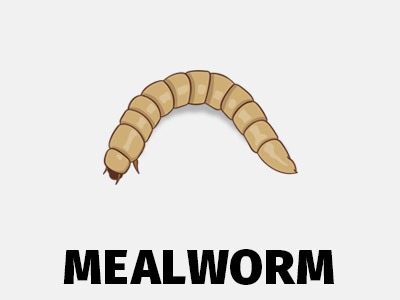
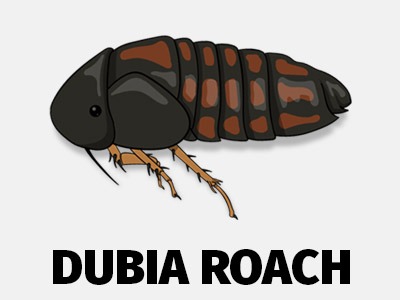
I recommend using crickets for their main diet. Dust the crickets with a calcium supplement 1 – 2 times per week and use a vitamin and mineral supplement once a week. Listed below are some additional foods you can give your Tomato Frog.
- Crickets
- Superworms
- Waxworms
- Mealworms
- Pinkie Mice
As with most frog species, it’s a good idea to incorporate a variety of different food sources into their diet. Occasionally feeding pinkie mice to adult Tomato Frogs is fine as well. Remember, this species is a nocturnal ambush predator. This means they will feed at night and they like to ambush their food as it passes by.
Breeding Tomato Frogs
When creating the breeding section of any care sheet, I try and seek out people with first-hand experience. During my research, I found a huge lack of information on this subject. In fact, I nearly left this section out because I’m not willing to provide you guys with sub-par information.
Just as I was about to give up, I stumbled upon an old article describing the efforts of the Baltimore Zoo. Their goal was to breed the Madagascar Tomato Frog (Dyscophus antongilli) naturally, in an effort to help increase their populations.
Up until they began, the only success in breeding this species came with the use of hormones, which sometimes produces adverse side effects. I continued reading the article and, to my surprise, they detailed all the steps they took in successfully breeding Tomato Frogs naturally! If you’re interested in reading the whole thing, I’ve added a link in the references section at the bottom of this page.
Sexing
Before we get to the breeding section, it’s important to establish the difference between males and females. Luckily, it’s easy to tell the difference with Tomato Frogs.
The females are larger, measuring between 3.5 – 4 inches in length; they’re bright red or orange. Males, on the other hand, are slightly smaller and more slender. They measure 2 – 2.5 inches in length and they’re not as bright, their colors are a dull red-brown or yellow-orange.
Breeding
The Baltimore Zoo was successful in breeding because they replicated their natural breeding season; the rainy season. Their enclosures were set up with pea gravel covered in sheet moss, slightly sloped to allow for a pool of water on one end.
Plants, cork bark, and a plastic hut were added for hiding. They fed them gut-loaded crickets twice daily, dusted with vitamins and minerals. In addition to this, a full-spectrum light was used for a daytime cycle.
They placed four males and two females in two 48″ x 24″ x24″ terrariums and maintained a dry season for six months. The humidity was kept between 55% – 65% and the water level decreased slightly. Increase ventilation and don’t mist as often to keep a drier relative humidity.
After six months, the researchers attempted to mimic the rainy season by increasing the water level and dimming the lights, while a misting system was used to simulate rain. The next morning, the males began calling,
and shortly after, they were found in the amplexus position. Amplexus is a position where the male frog grasps the female around the back. The female passes the eggs through the cloaca while the male fertilized the eggs outside the body.
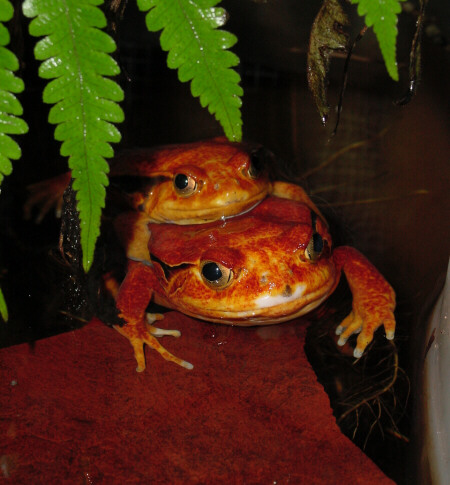
Following the same steps as the Baltimore Zoo, you can have success breeding your Tomato Frogs as well. Once the eggs are laid, move the adults out of the enclosure. In roughly 48 hours, the eggs will hatch.
Tadpoles & Froglets
After the tadpoles hatched from the eggs, the researchers proceeded to separate them when they grew to 1/4 inch. The team placed the tadpoles into separate containers with sponge filters.
At this point, if you have experience in raising tadpoles, you can take over from here. While you don’t have to separate the tadpoles, it gives you more control over them individually.
Each day, offer the tadpoles a variety of Spirulina flakes, aquarian tropical flakes, and Tetra staple flakes. Perform partial water changes for the tadpoles as needed.
After roughly 30 days, the tadpoles will metamorphose into little froglets. At this stage, begin feeding them pinhead crickets and fruit flies dusted with vitamin and mineral supplements. Their color will remain brown or gray for the first two months.
Handling Tomato Frogs
I strongly suggest limiting the amount of time you spend handling these frogs. It’s fine to transport them from one container to another if you need to clean their cage. Any more than that and you’re going to cause unwanted stress for your pet.
Handling frogs, in general, is frowned upon. There are few species that tolerate it and the Tomato Frog is not one of them.
If you need to clean their enclosure, clean your hands before touching them. Soap and other chemicals on your hands will be absorbed by the frog, which can be harmful. Rinse your hands with water and leave them damp. Carefully place them into a small container and remove them from their enclosure so you can clean their terrarium.
Perhaps the best sign that you’ve stressed your Tomato Frog is if it secrets a white substance from its back. This is their defense mechanism and it means they feel threatened. In the wild, it’s used to deter predators like snakes.
It can cause allergic reactions to humans, so if you come into contact with it, gently place the frog back into its enclosure and thoroughly clean yourself.
More About Tomato Frogs
Perhaps the best place to start is understanding the Dyscophus Genus. This Genus contains a total of three species; all of which share the common name “Tomato Frog”. Currently, there seems to be some confusion surrounding two of these species in particular; the antongilii and guineti.
This is due, in part, to their strikingly similar appearance and genetic makeup. The Dyscophus antongilii is considered the real “Tomato Frog” while the Dyscophus guineti is sometimes referred to as a false tomato frog or “Sambava tomato frog”.
In the 1990s, the “real” Tomato Frog was considered endangered. As such, certain collectors and researchers took it upon themselves to attempt breeding them in captivity, in hopes of saving the population and it worked.
They were once listed as Vulnerable, then Near Threatened but in 2017, the IUCN Red List updated their status to Least Concern (LC). In recent years there has been some debate on the range they inhabit. Researchers suggest the species may have never been threatened in the first place. Despite the confusion, it’s just good to see their populations are stable.
Now that you know a little background on the Dyscophus Genus, I’ll give you the bad news. Most of the species sold in the pet trade are actually false tomato frogs. Despite this, there are few differences between the two and even researchers have a hard time telling them apart!
Tomato Frogs In the Wild
Madagascar tomato frogs (Dyscophus antongilii) or False tomato frogs (Dyscophus guineti) are both endemic to Madagascar. The “true” tomato frog is said to inhabit Antongil bay, but due to the confusion between these two species, their real distribution is largely unknown. Aside from the confusion between Dyscophus species, one thing is for certain; they like topical and subtropical climates.
They’re found in rivers, swamps, marshes, and even rural and urban areas. These frogs are ambush predators, hunting mainly at night. They survive by feeding on a variety of invertebrates like mosquitos, flies, and beetles.
When attacked, they secrete a substance from their skin with the purpose of deterring predators (mostly snakes). They also inflate themselves as a warning. This, accompanied by their red coloration, is where their common name comes from. While “puffed-up” they look similar to a tomato.

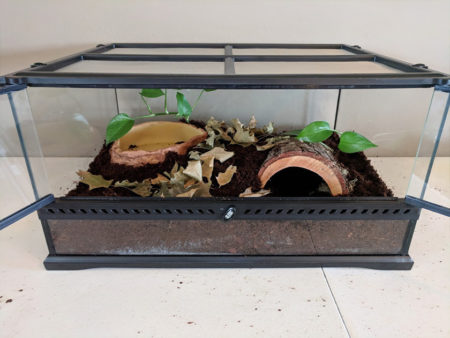
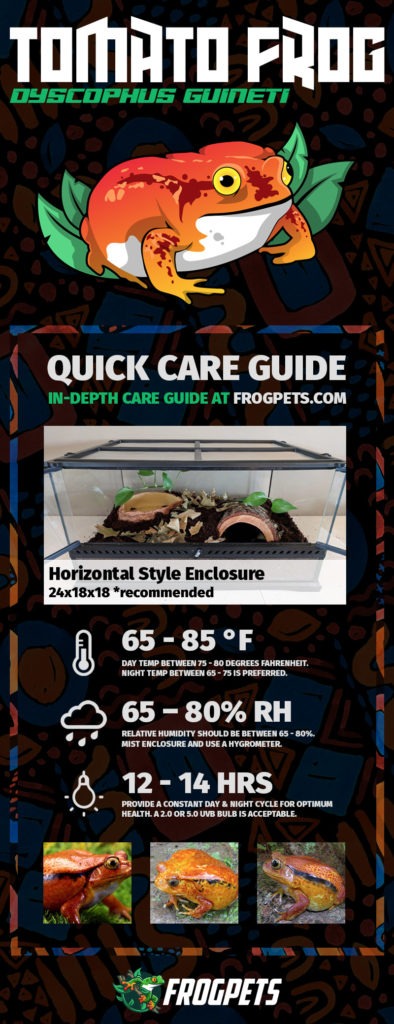
52 Comments
Hi, so I was wondering how many tomato frogs could I keep in an 18x18x12? Also, do you need to dampen the substrate like for pacman frogs or do you just dump it in? And also, could you feed them crickets and nightcrawlers, with occasional waxworms? Thanks, this is a great website.
Thanks for your comment. I typically recommend a 24x18x18(or 12 height) for more than two Tomato Frogs. You can do 1 – 2 with 18x18x12.
they are so cuteeeeeeeeeeeeeeeeeeeeeeeeeeeeeeeeeeeeeeeeeeeee
I nteying to find that baltimore zoo article but can not find it on this page do you still have a link?
Hi, Anthony!
It seems this site’s old “reference section” was lost during a recent site update. I’ll get those attachments back soon. In the meantime, I’ve linked to the page you’ve requested within this article. You can find the Baltimore Zoo Article here.
Hi! I have a happy tomato frog but am rescuing another one – does the new guy need to stay separated to quarantine? If so how long? Never introduced a frog to another before.
Hi, Sara! I’m only now checking some comments for the day. I believe we spoke via email. I hope things are going well for your two Tomato Frogs!
It just got a tomato frog and I need help .
How do I make it feel like home for her
Hey! Check out our Tomato Frog care guide! It’s packed full of helpful information to make your pet feel at home.
My 11 year old daughter just got a tomato frog last Saturday. We have the tank set up with coconut bark moss a fake plant and water dish. Should we put a rock or two in the tank? If so what kind round or flat?
Its your choice, really. Decorate the enclosure however you want! One tip when dealing with rocks is this; make sure its very stable and won’t fall/crush your frog!
Great site and very informative
I have two tomato frogs. I feed them crickets and meal worms. For the past three weeks neither one of them have eaten. How long can they go without eating? How do you know if they are sick? They don’t seem to be too active either.
So the crickets are still there even a day later? Is the temperature and humidity within the recommended range?
Does the tomato frog prefer to have a cage mate, or does it really not matter in regards to their quality of life? I don’t want to just get one, and it be lonely. Thanks!
It’s hard to say, honestly. Your tomato frog should be fine alone.
Thank you so much for the info! I just got mine and I got to of them- male and female- I believe they are a little bit okay with me handling them but when trying to pick the female up she is really jumpy haha, the male is more mellow and does not really mind getting picked up they like to swim around and I have kinda taught them to be hand fed! I honestly think they are so cute and the female is red / orange and the male is yellow/ orange! I named them Ketchup and Mustard! XD
Hey no problem, Zoe! Ketchup and Mustard, huh? Lol I love those names! Good luck with your pets and thank you for commenting!
I have been wanting to get another Tomato Frog I have a male right now but I want to know if I get another male if they will be okay in the same cage or if I would have to get another cage for the one I am wanting.
Hey Katherine! Yes, you can keep two males together so long as there is enough room in the enclosure. Males do become aggressive but until the mating conditions are right. See the breeding section on this guide for more information on the conditions!
Hi. Out tomato frog has been burrowed for about a week. Is that normal? I’m concerned that he hasn’t eaten. Thanks!
That’s fairly normal. I do advise you to use a quality hygrometer to ensure the humidity within the enclosure is within the recommended range.
How long do i let my tomato frogs go without eating? they have burrowed in.
Feeding 2 – 3 times per week is typical. Keep an eye on the overall weight to make sure your frog is getting enough food. It’s possible to overfeed them too.
Hey there!! I plan on getting some tomato frogs and found this site EXTREMELY helpful and wanted to say thanks! I also have a couple questions. I was considering getting three females and putting them in a 20 gallon tank. Would that work fine? Also, how do you go about cleaning the cage? Like could you just move them to a box with substrate and water in it? Once again thank you very much for all of the great information. Especially the picture of the cage!!
Tomato Frogs get kind of big! A 20-gallon tank would be a little too small! A 30 gallon tank is more suitable. You can spot clean without removing the frogs. For deep cleaning, however, I recommend putting the frogs in a separate container until you’re finished! I’ve used small plastic containers and even an old 10 gallon tank before. You’ll want to ensure the frogs are back in their normal enclosure pretty quick (15 – 30 mins)!
Hi! My tomato frog has become duller in color and has begun hanging out in his dish all the time instead of burrowing like he usually does. He’s become more active during the day too which is not his usual behavior. I’ve thought about turning off his heat lamp and adding vitamin and calcium supplements to his diet, but is there anything else I should try that might help? Thanks!
Definitely do the calcium and vitamin/mineral supplements. Also, what substrate are you using and how long has it been since you changed it? If you don’t have a quality bio active setup, you may need to change the substrate every few months. It can become acidic over time from your frogs droppings. Other than that, keep the recommended temp and humidity.
do tomato frogs need a buddy or can they be solitary?
They can be kept by themselves! A tank buddy is fine too, so long as they’re roughly the same size and there is a enough room for both of them.
Do they have to be certain sexes to be kept together? I believe I have a female now, would a male or other female be fine?
Yes, two females or a male/female combo would be fine!
So how often should they be fed, and what do you have to do for cage cleaning?
It seems I forgot to mention that in this post! So sorry. How much/often you feed them depends on their size and what you’re feeding them. It could be 2 – 3 times per week, 4 or 5 crickets each feeding. Smaller frogs may eat 4 – 5 times per week while eating 2 – 3 (smaller) crickets at a time. This guide will help answer your question.
Hey, I have 2 females and a male, I was trying to build them a palludarium with a water shallow water feature. Should I steer away from this? And can the substrate humidity be too high? What are side effects?
I’ve not tried a palludarium setup for Tomato frogs myself. I bet you can pull it off though. Make sure there is plenty of air circulation. It might be a bit on the humid side for liking. Keeping the humidity in the 60% – 80% range is preferred. You’ll definitely want to make sure their lid is screen. Perhaps even having a horizontal-style terrarium would be beneficial because there will be more open space (ie – open air, lower humidity). Make sure the substrate doesn’t stay too damp. Your best friend will be a quality hygrometer.
i have a male tomato frog would it be ok to get him a male friend or would it be better to get a female??
As long as there is plenty of room for both of them. Males can be kept together so long as the conditions for breeding aren’t met.
Thank you for the useful information!
I’m glad it was helpful! Thanks for the comment.
i actually knew most of this but it was very helpful! especially the breeding part. thanks!!! my tomato frog is very happy, also what size tanks do you recommend? i have mine in a 15 gallon
A single tomato frog will do well in a 15 gallon. A 24″ (wide) by 18×12(or 18) would be nice but not needed.
Thanks for info on tomato frogs.
No problem!
We have two tomato frogs we’ve named them Hunts & Heinz & keep them in a 40 gal. enclosure. We believe them to be Male & Female. The Male (Hunts) Primarily stays hidden but, The Female (Heinz) has been hanging out in its water for the past couple days. She normally stays hidden but, her recent activity is concerning me
Is she still eating? Also, has there been any changes to their enclosure like low humidity?
love this website
Thanks!
Would it ok to use a 29 gallon aquarium(long) as a habitat
Yes, I think so 🙂 Do you know the dimensions? A 29-gallon aquarium is roughly equivalent to a 24x18x18 terrarium in size.
Just got a tomato frog last night. Mine became active though early morning and is hopping all over the place. I’m worried it is stressed. Or is it just accumulating and searching it’s new environment? I know they usually bury themselves during the day is why I ask. Thanks in advance…
So long as the temperature, humidity, lighting and diet are good, I wouldn’t worry too much. Keep an eye on it and see how it does over the next day or two.